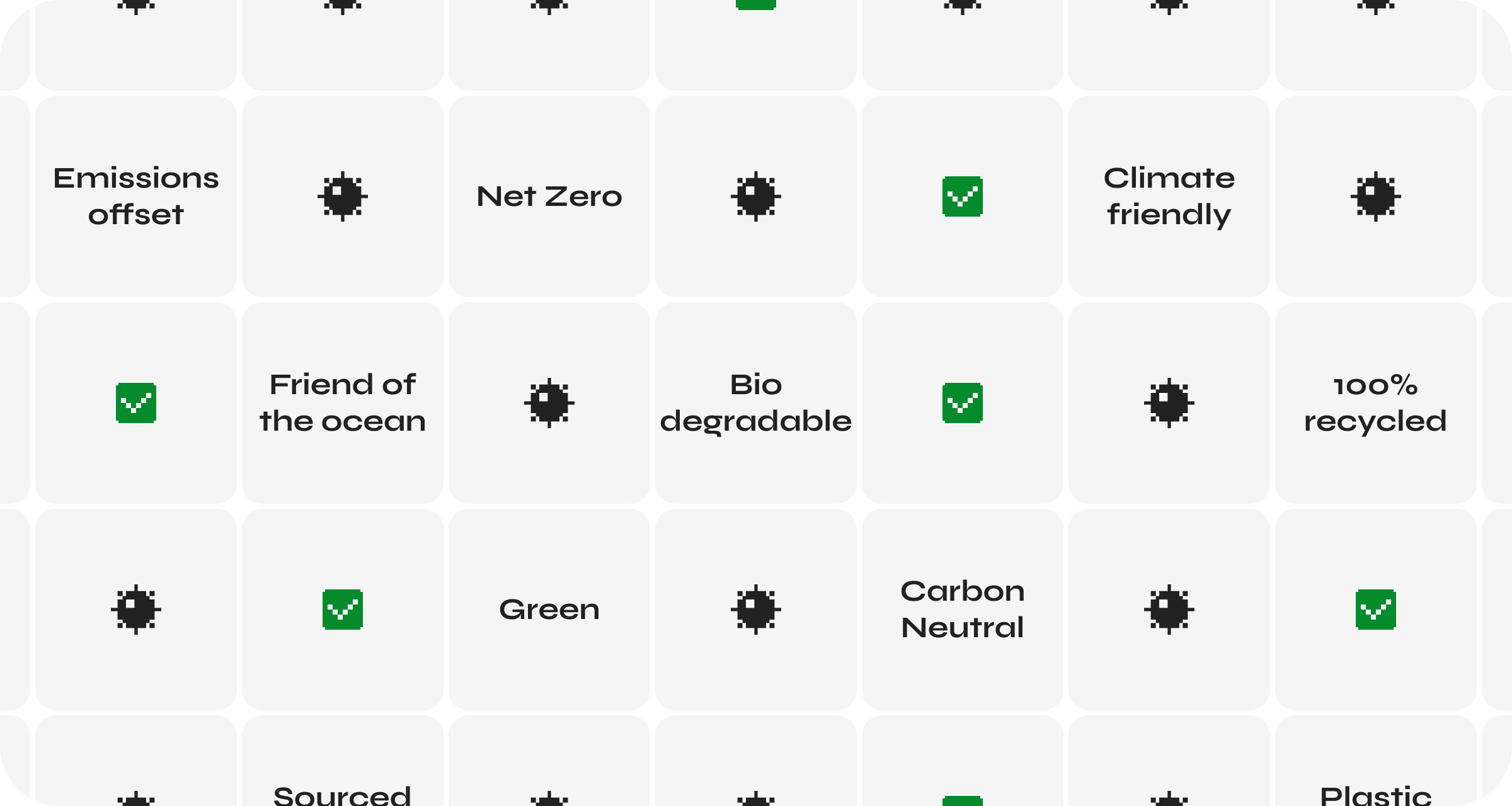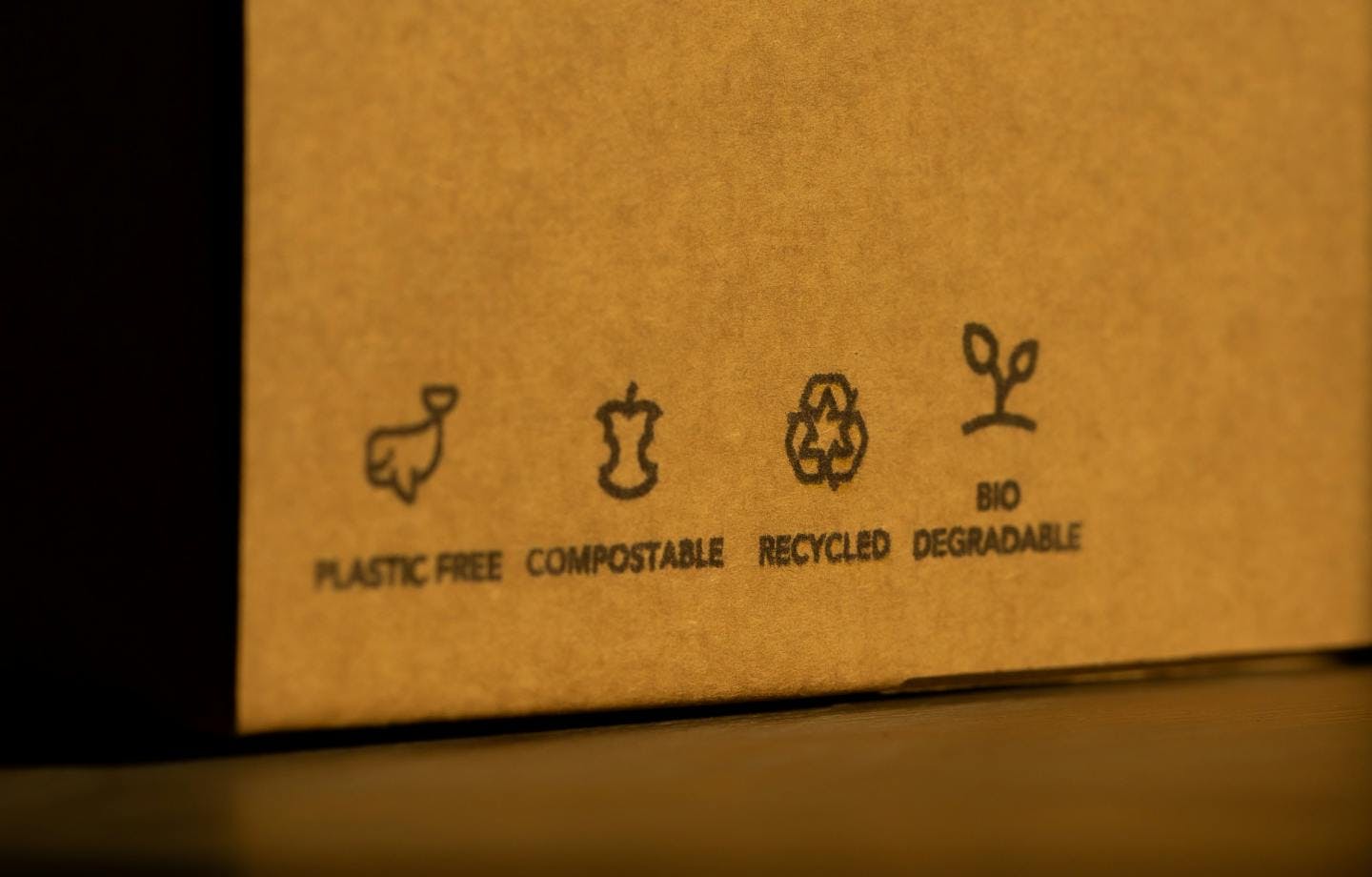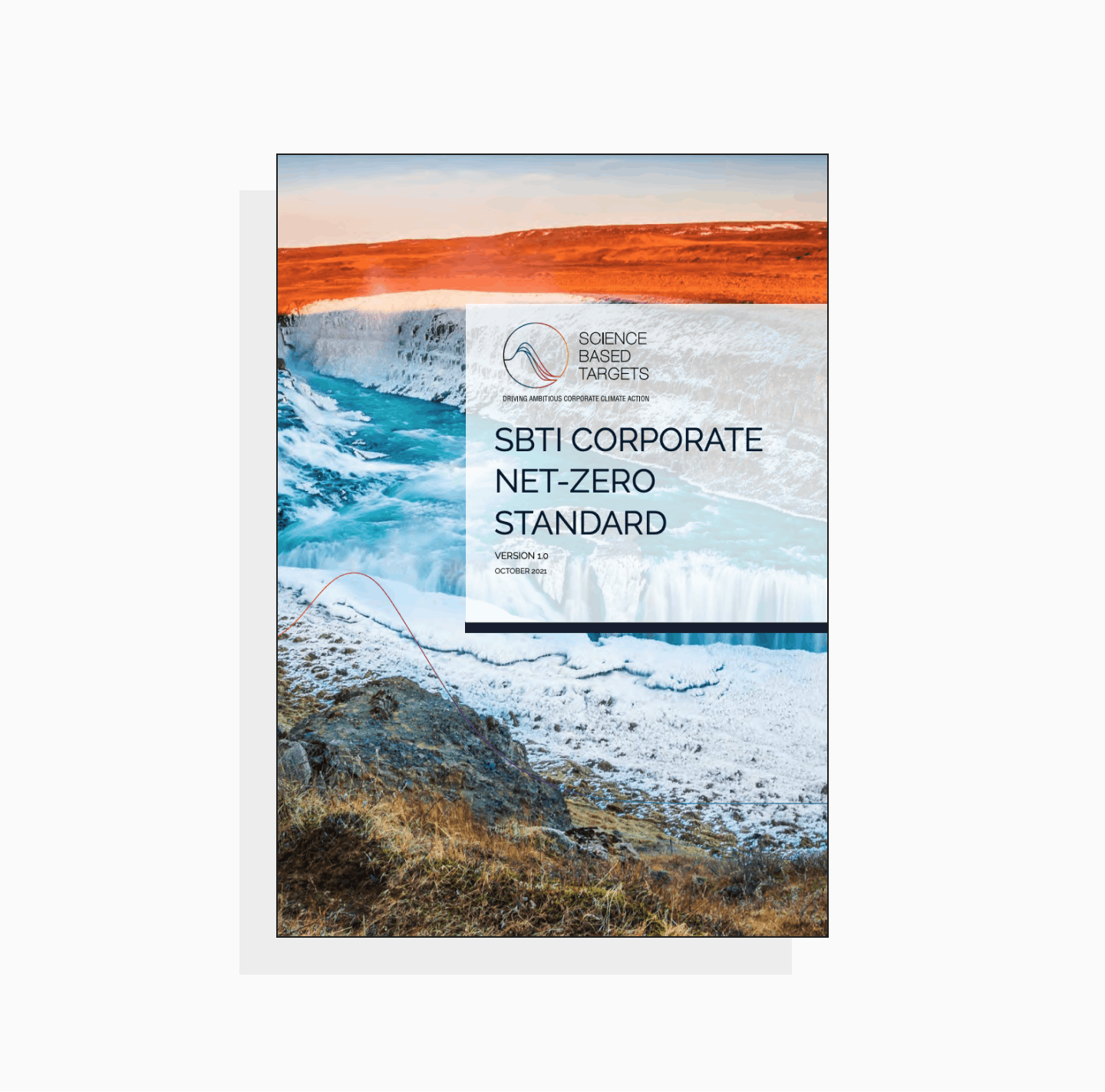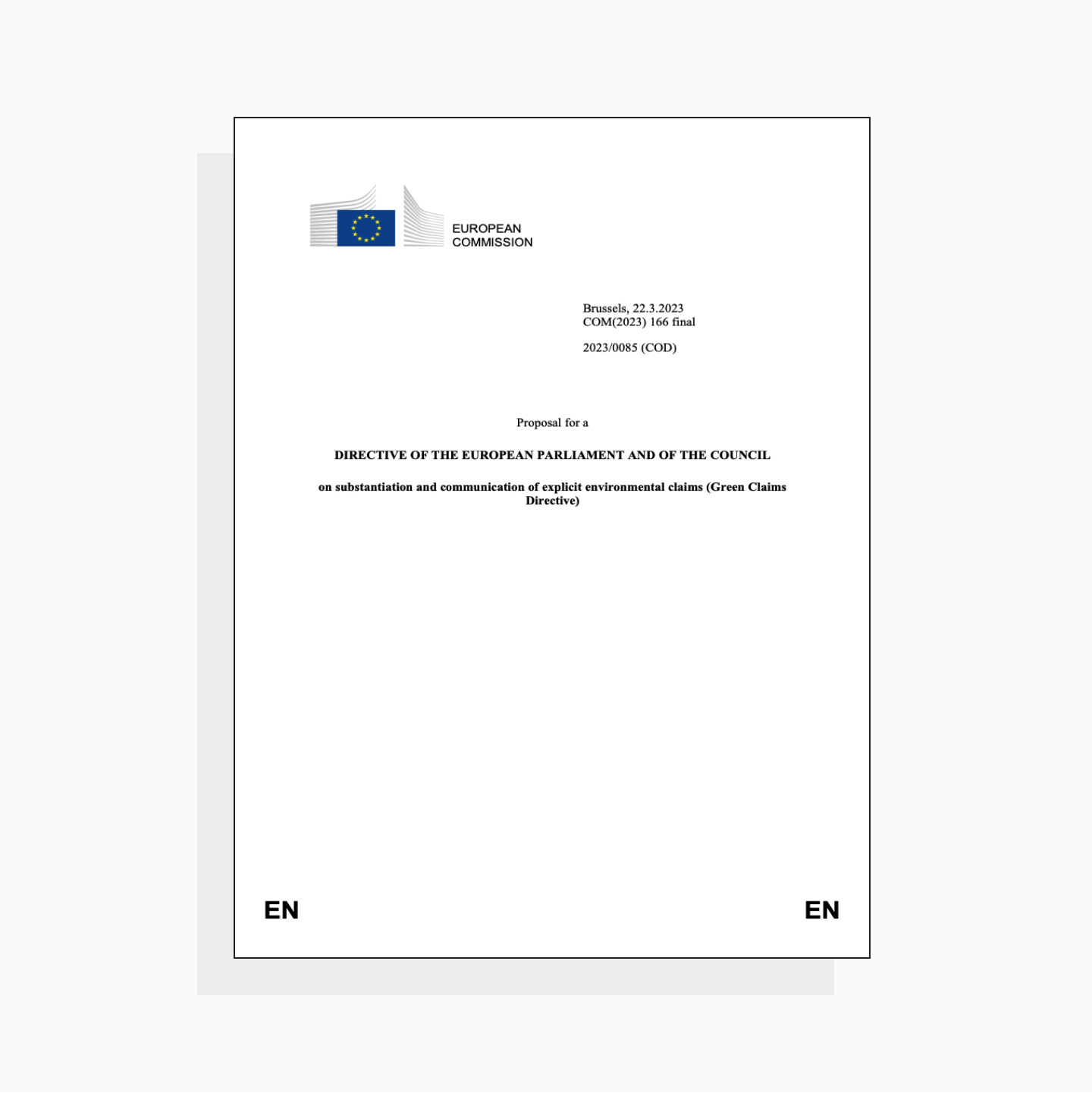

A key benefit of corporate sustainability initiatives and climate commitments is the commercial value that they drive.
Consumers, investors, and employees are all now making sustainability a top priority – so companies that can communicate their climate credentials effectively have an opportunity to drive business growth, attract the best talent onto their team, and win new investment.
Today, many companies communicate their climate impact and commitments using recognised green environmental claims in their marketing messaging, on packaging etc.
Different green claims – carbon neutral, net zero, climate positive and so on – have different meanings and require different approaches to business sustainability to fulfil.
To make a credible green claim – and prepare for incoming new legislation such as the EU Green Claims Directive – it’s important for your company to understand the meaning of different types of green claims and how to target them.
In this post we’ll take a closer look at:
- What different green claims actually mean and when companies can credibly make them: carbon neutral, net zero, carbon negative, climate positive
- Why you might want to target one green claim over another
- How carbon offsetting fits into each of these green claims.
Subscribe for the latest insights into driving climate positivity
First things first, what is a green claim?
A green claim – sometimes also called an environmental claim or climate claim – refers to any sustainability credential that is used to describe a product, service, or brand.
Green claims often relate to climate targets or commitments made by companies, so a company may describe themselves as ‘climate positive’ or ‘committed to net zero by 2030’ – such as Vestre, which is already a ‘climate neutral outdoor furniture manufacturer’ and is working towards a ‘net zero’ target.
Or, green claims might relate to the environmental credentials of specific products, materials, or packaging. So, for instance, a clothing brand might explain that their new line is ‘made from 60% recycled plastic’ or is ‘carbon neutral’ as a product.

A real-life example of this is the M0.0NSHOT trainer by Allbirds: ‘the world’s first net zero carbon shoe’:

As you can tell from these examples, green claims can be an incredibly strong and powerful message for a company or product.
Unfortunately today there are also many examples of companies using green claims like these in greenwashing – claiming that their company or product is ‘carbon neutral’ or ‘net zero’ without the evidence to back this up. We’ve seen high-profile brands like H&M, Unilever, and Lufthansa Airlines hitting the headlines because of this, with their adverts ending up banned due to misleading environmental claims.
So, the message here is two-fold:
- Green claims are a great way to showcase company climate commitments and credentials in an instantly recognisable way.
- To ensure green claims are credible, companies need to be sure they understand the true meaning of any green claim that they make and be able to substantiate the claim they’re making – back it up with evidence of the company’s actions to get there.
The first step is understanding – so let’s take a look at the meanings of the most common green claims at a company level and break down why you might want to target one over another.
Carbon neutral vs carbon negative vs climate positive vs net zero – what do the different green claims actually mean?
Some green claims are fairly easy to grasp.
Take ‘100% recycled’ for instance. For a company to make this claim to describe the packaging of their product, the packaging needs to be – yep, you guessed it – made from 100% recycled material. And substantiating that claim means providing evidence from the company’s production process of the material sourced or produced for that packaging.
Other green claims are a bit more confusing.
Terms like ‘carbon neutral’ ‘carbon negative’ ‘climate positive’ ‘net zero’ all sound similar, but have specific meanings in terms of corporate climate targets – and actually, the role of carbon offsetting has a lot to do with it.
So, let’s take a look at the meaning of these four green claims – net zero, carbon neutral, carbon negative, and climate positive.
What does 'net zero' mean for a business?
A state of net zero emissions is reached when:
- Carbon emissions have been reduced as much as is possible, in line with science-backed targets.
- Any residual emissions (i.e. emissions which cannot be reduced any further) are balanced out with an equivalent amount of carbon removals. The length of time the removed carbon will be stored for should be equivalent to the amount of time the residual emissions are expected to be in the atmosphere – typically this means carbon removals must be permanent to align with net zero.
If the company managed to completely eliminate their carbon emissions, they would then be ‘zero carbon’ – but this is virtually impossible.
So, for a company to claim to be net zero they must be able to prove that they have cut their emissions as much as possible – often in line with a respected framework such as the Science Based Targets Initiative (SBTi) Net-zero Standard – and that any residual emissions have been balanced by buying an equivalent amount of carbon credits from permanent carbon removal projects e.g. direct air capture or enhanced weathering.
Achieving net zero carbon emissions isn’t an easy task and won’t happen overnight, but it is a great indicator of real commitment to addressing a company’s environmental impact.
Many companies have made targets and plans to reach net zero by 2050 – in which case their green claim would be ‘working towards net zero’ or similar.

What does 'carbon neutral' mean for a business?
Carbon neutral indicates a state of zero emissions.
It’s similar to net zero, but differs in two important ways:
- There is no requirement or expectation that emissions must have been reduced as much as possible – a company could be carbon neutral through offsetting their carbon footprint in its entirety and not reducing it at all.
- The balancing of emissions can be done through buying carbon credits in either emissions avoidance or carbon removal projects – it does not need to be permanent carbon removal, you are simply compensating for the emissions produced so that the overall contribution to global greenhouse gases is zero.
It’s a less rigorous target than net zero for a company to make, but often it’s a useful first step in a sustainability strategy or climate commitment.
For instance, if you’ve just calculated your company’s carbon footprint for the last financial year you could offset those emissions instantly though buying carbon credits – taking immediate action to address your environmental impact whilst determining what needs to be done to reduce those emissions (which can take a while to put into action).
At this point, you can credibly claim to be a carbon neutral company – whilst you continue working towards reducing emissions or an eventual net zero target.
What does 'carbon negative' or 'net negative' mean for a business?
Carbon negative – also known as net negative – indicates that the company results in less than zero carbon emissions being emitted. This means, in practice, that the company is removing more carbon from the atmosphere than it produces.
It’s essentially a step beyond net zero – once a company has achieved net zero emissions, they can continue to increase their climate impact by buying carbon removals above and beyond what is needed to address their residual emissions.
So, if a company reduced emissions as much as possible and then calculated that their residual emissions were 2,000 tCO2 per year, they could choose to buy 5,000 tCO2 of carbon removals per year and then they could credibly claim to be carbon negative or net negative.
This is a great target to continue progress once you’ve achieved net zero as a company – ensuring companies do not stop once they reach a set target, but instead continue to increase investment in climate solutions.
What does 'climate positive' mean for a business?
Climate positive is exactly the same as carbon negative – the company goes beyond net zero to remove additional carbon emissions from the atmosphere.
It’s just a different framing, so instead of saying that the company's activities resulting in ‘net negative’ emissions being released into the atmosphere, the company is having an overall positive impact for the environment.
Disclosing the role of carbon offsetting in your company’s green claim
In all of these green claims carbon offsetting and removals play a big part.
For the green claim to be credible, the carbon credits bought towards that claim must be credible themselves – additional, durable, single-counted, providing co-benefits.
Otherwise, you’re compensating for your company emissions with carbon credits that don’t actually make the real-world carbon benefit that they claim to, and your claim isn’t valid.
So, to make any of these green claims you need to be able to disclose the amount of carbon offsets or removals that you’re using towards the claim being made, and provide evidence that the carbon credits are from high-quality, credible carbon projects.
Incoming legislation reflects this.
For instance, the EU Green Claims Directive proposal highlights the need to disclose and substantiate the use of carbon offsetting towards claims:
- Communicate ‘in a transparent manner’ that offsetting is involved in the claim, and what proportion of emissions are being addressed through offsetting.
- Disclose whether carbon credits are emissions avoidance/reduction or carbon removals projects (because net zero requires removals)
- Provide evidence that the carbon credits are high-quality and are actually having the carbon benefit they represent.
Communicating your offsetting in this way not only prepares you for legislation like this, but also clearly sets you apart from the many companies out there that are relying on dodgy offsetting for their environmental credentials.

Reframing green claims – climate contributions and Beyond Value Chain Mitigation
As you can see, there’s a fair amount of nuance in the different climate targets and commitments a company can make – and the resulting emissions reductions and carbon offsetting/removal which needs to happen.
Green claims can be powerful frameworks for companies to align their sustainability work with. But, they can also be distracting, leading you to focus on targets, processes, and messages rather than on maximising your company’s positive impact.
So, here’s a couple of alternative approaches to consider:
- Contribution instead of compensation. The green claims we’ve outlined above hinge on the use of carbon offsetting and removals to address company carbon emissions. This approach can lead to buying cheap offsets to be able to claim to be ‘carbon neutral’ – which makes very little real-world impact. An alternative approach is to set a budget and use that money to contribute to a portfolio of high-quality, truly impactful carbon projects. For more on this, go to our previous post: Contribution over compensation
- Beyond Value Chain Mitigation (BVCM). Making climate commitments and targets for a company to reach at some point in the future e.g. ‘net zero by 2050’ can lead to an exclusive focus on reducing emissions across the value chain today – and leaving buying carbon credits for a later date once those emissions have been reduced. Carbon projects need funding now in order to implement vital climate solutions to make progress towards the bigger picture of global climate targets and businesses can make a huge difference now by looking outside of their value chain and funding those carbon projects now. For more information, head to the SBTi’s post on BVCM.
Unsure which green claim or approach makes most sense for your company? Want to learn more about credible carbon offsetting? We’re always happy to chat through the options – get in touch.
Readers also liked
Readers also liked

Subscribe for emissions intelligence insights
Get the latest updates in the world of carbon tracking, accounting, reporting, and offsetting direct to your inbox.


